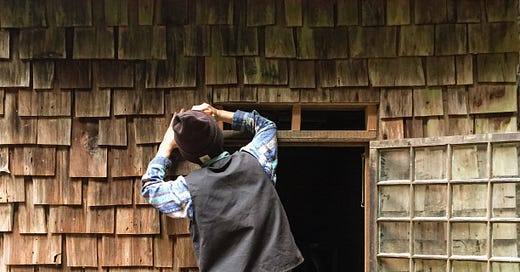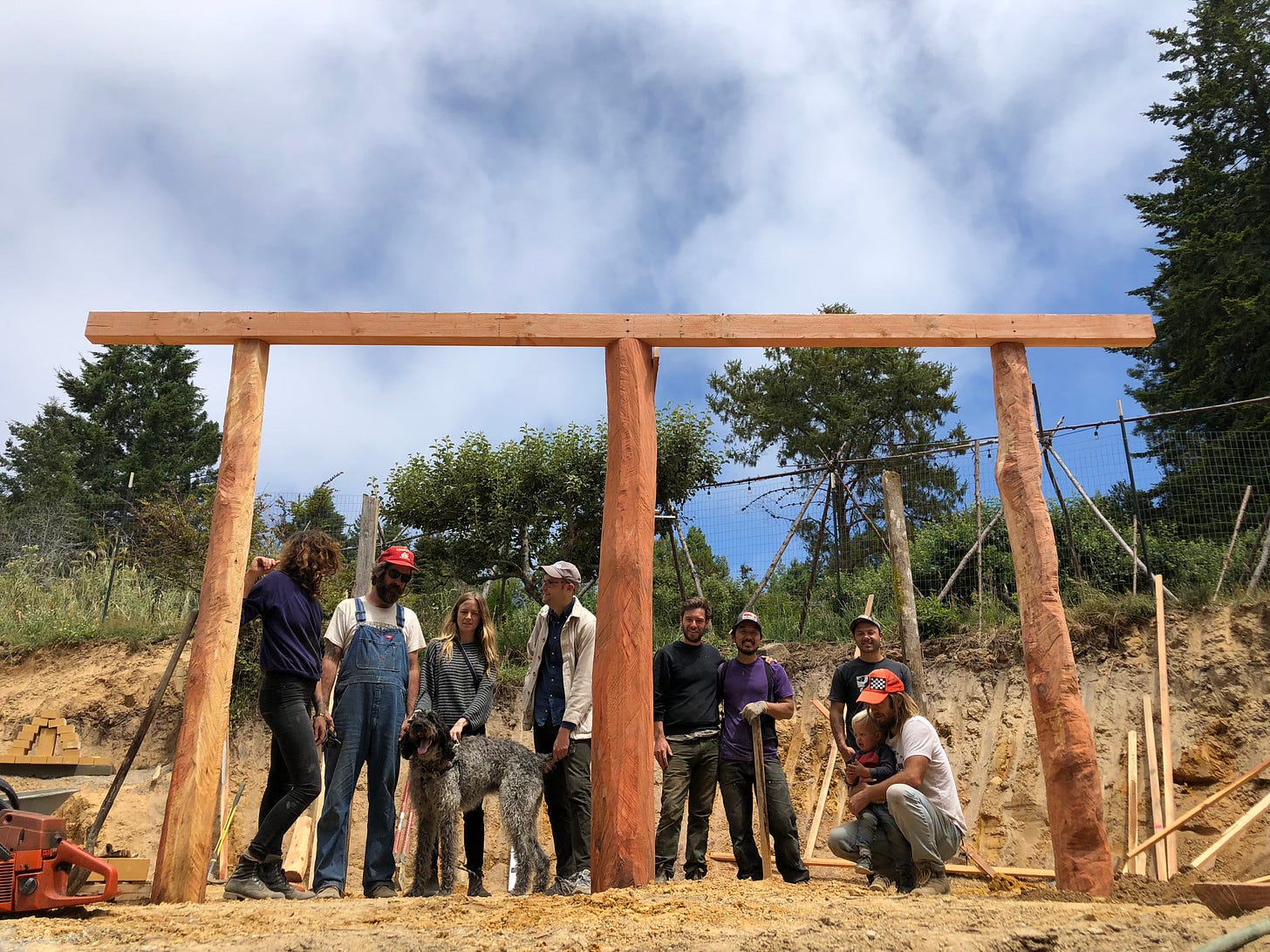Anyone who has visited Salmon Creek Farm over the years, or even just experienced it through photos, will recognize the handiwork of our friend Adam Zeek all over the place. He came to us in a moment during those early days when we were desperate for direction on how to save these precious precarious cabins. With each visit he brought more friends along with him, expanding the circle - part skill-share and barn-raising - everyone learning and teaching, leaving something behind for those coming after to enjoy and even expand upon: finishing Dawn commons, saving Carpenter cabin, building the OK (Outdoor Kitchen), erecting the greenhouse. He also brought a special quiet touch of mystery and magic - a small elaborate carved wood sculpture made at the end of the day to be placed in the woodpile for the next person to burn, an abandoned metal chair frame brought back to life with salvaged boards and brass screws found in the hoarder shed, a carved sign instructing future guests on the rules for a healthy & happy life left at the front door, a pipe fashioned from a piece of driftwood with an old copper fitting. And the meals! He enticed Andrew Barton down from Portland to feed the crew such memorable communal lunches and dinners (which later went on to partially inspire his beautiful brand new cookbook/memoir Free Food - highly recommended.) So much gratitude to Adam, and here some memories in his own words…
Looking back on my first visit to Salmon Creek Farm, I could never have imagined how much that trip would influence the course of my life. I was in my early thirties, working as a carpenter and home remodeler in Portland. A friend and I were road-tripping from Oregon through California. The trip was supposed to be a simple break from work, a chance to recharge and gather some inspiration. I had no clue just how much of that I was about to stumble upon.
As we rumbled down the dirt road towards the end of the line, I started noticing signs of a laid-back, rustic lifestyle—something that felt oddly familiar. Handmade redwood structures dotted the landscape, with overgrown lots lending a kind of untamed beauty to the place. This part of California was completely new to me, and I found it really charming.
The moment we parked, a tall stranger named Fritz greeted us warmly. Any apprehension I had about this detour instantly faded. We chatted about our trip, and he offered to give us a tour of the farm. The sun filtered down through towering redwoods, creating golden shafts of light that made the place feel almost surreal. As we walked, Fritz shared the land’s history, and my curiosity shifted toward the structures. My background in carpentry made me eager to learn about the hand-built techniques used here, and Fritz, a trained architect, was happy to dive into those conversations with me.
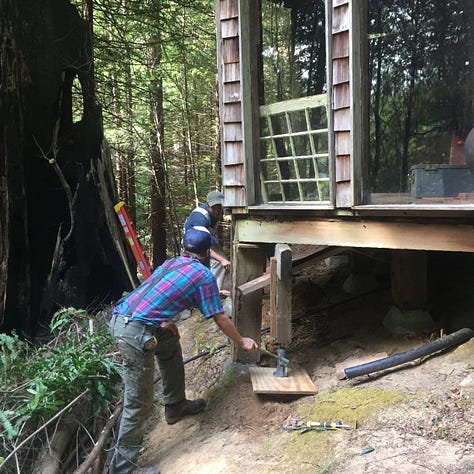
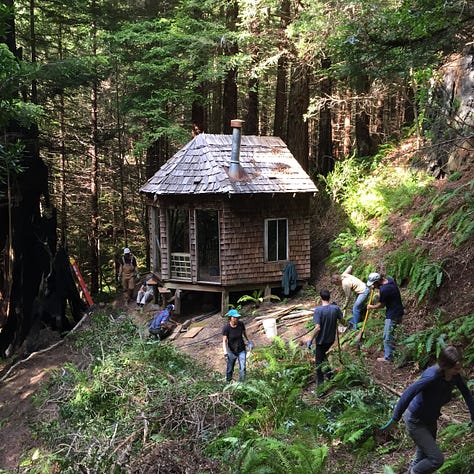

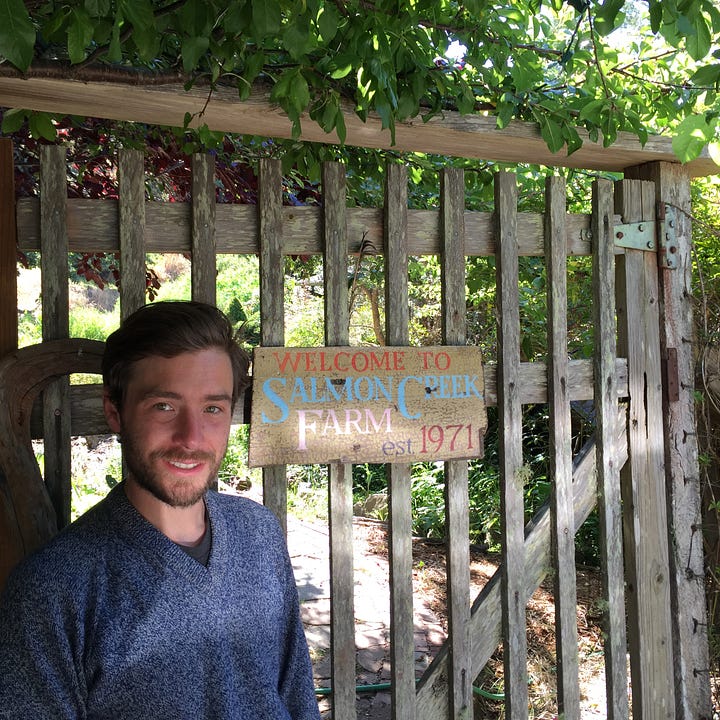
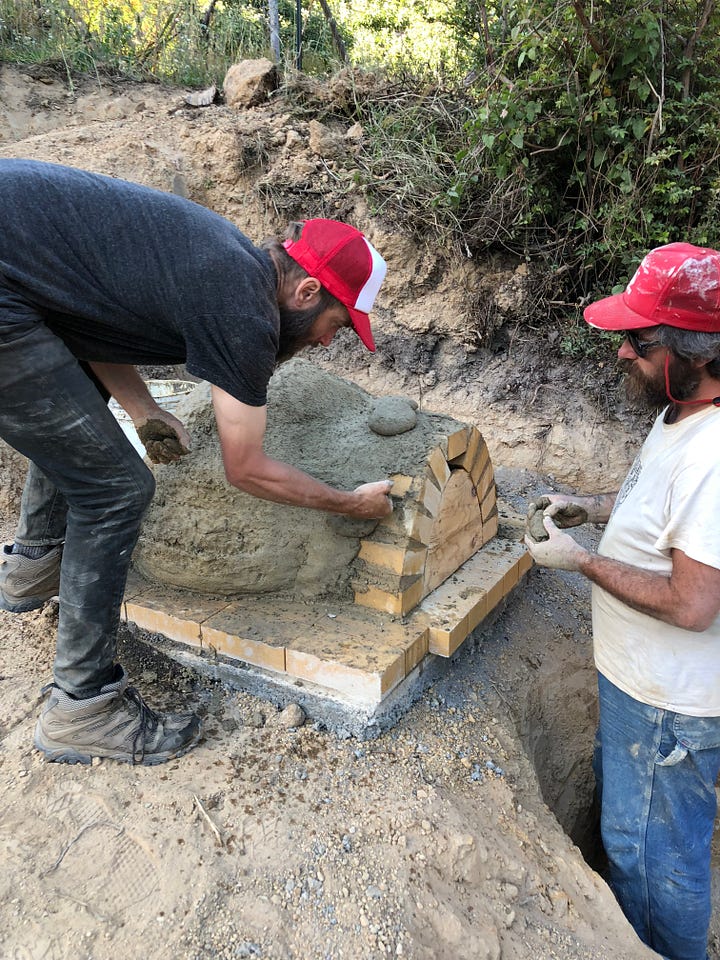
Before I knew it, we were at the tool shed, deep in discussion about construction. And within an hour of arriving, I was cutting a large opening in the Dawn Cabin dining room to install salvaged glass doors—fully absorbed in the work. It was a sharp contrast to my usual solo projects back home. Here, the collaborative energy was contagious, and I loved it. As the day wound down, we cleaned up and headed to a communal dinner. Later that night, alone in my cabin, I tried to process everything. I knew one thing for sure—I felt good. Really good. But what was this place? And how could I capture this feeling and take it home with me?
In the years following that first visit, Salmon Creek Farm became a regular destination for me. Each time, I’d bring tools, and each time, Fritz and I would dive into projects that pushed both our skills and creativity. Our partnership evolved, and we even organized a “Carpentry Week,” inviting both skilled and novice builders to join us for collaborative projects in the woods. These experiences were not just about building; they were about connecting with people and the land, and I learned more than I ever expected.
The first year, we tackled a cabin perched on a hill, lifting it up and reinforcing its foundation. We added a sleeping loft, a deck, an earthen staircase, and new windows. But it wasn’t just about the carpentry; we also fell into the rhythms of communal living, balancing structured workdays with time to enjoy the unique atmosphere of the woods.
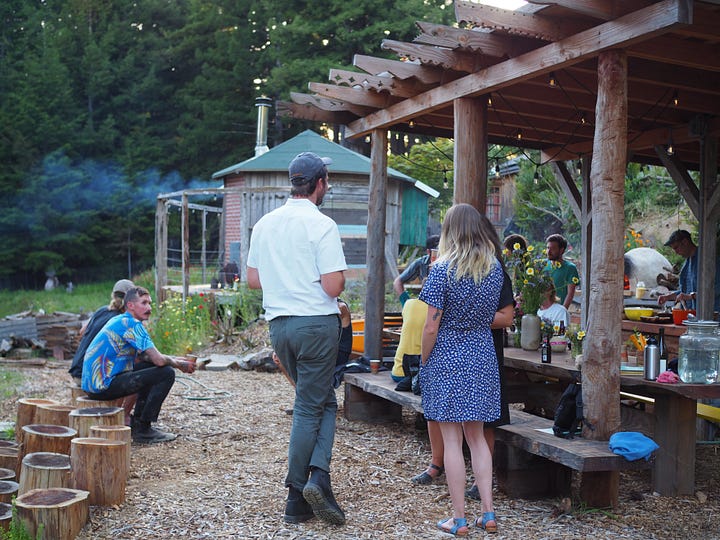
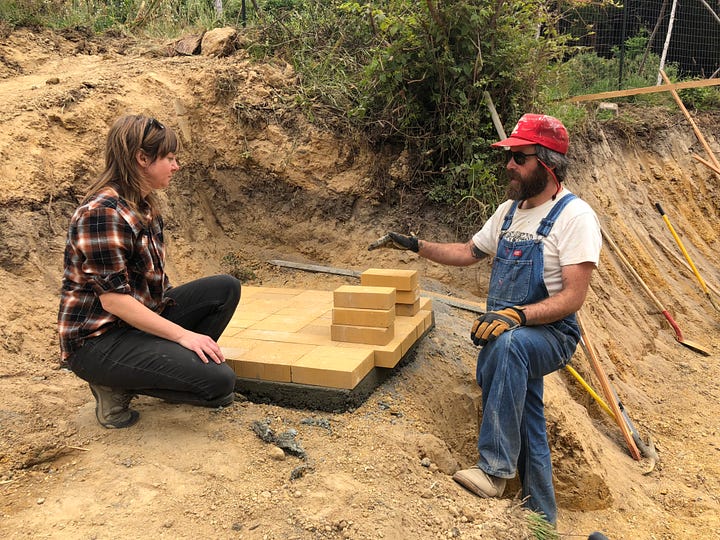


The second year, we built an outdoor kitchen pavilion complete with an earthen oven. That week was a whirlwind—getting such a large structure built in just seven days was no small feat. Every part of it was designed and executed by the group, with each person contributing a unique touch. One particularly memorable detail was the custom rafter tails—nine different designs, each created by a volunteer. While the kitchen took shape, we also rotated in and out of building the earthen oven, mixing mud with our feet and shaping it with our hands. Making something lasting together.
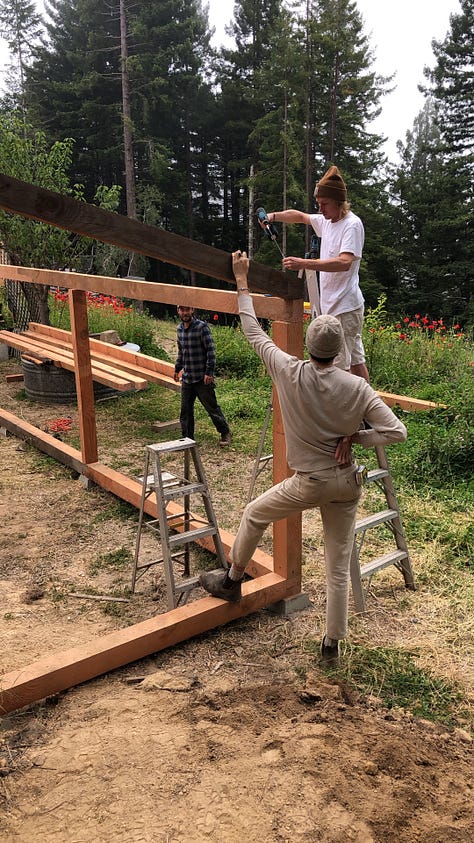
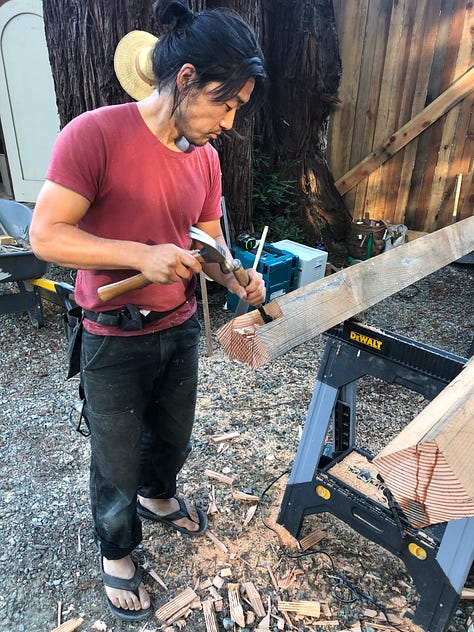
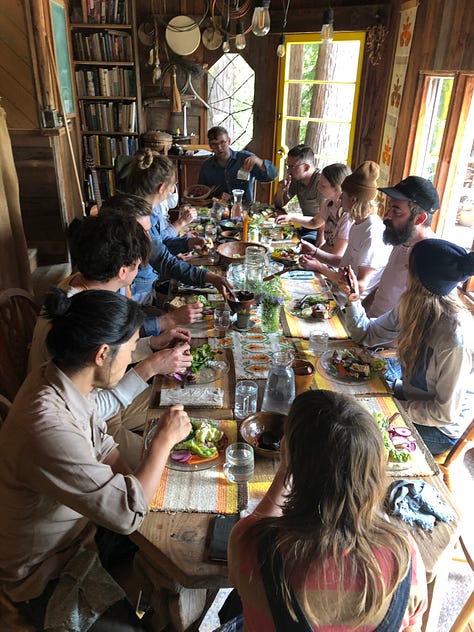
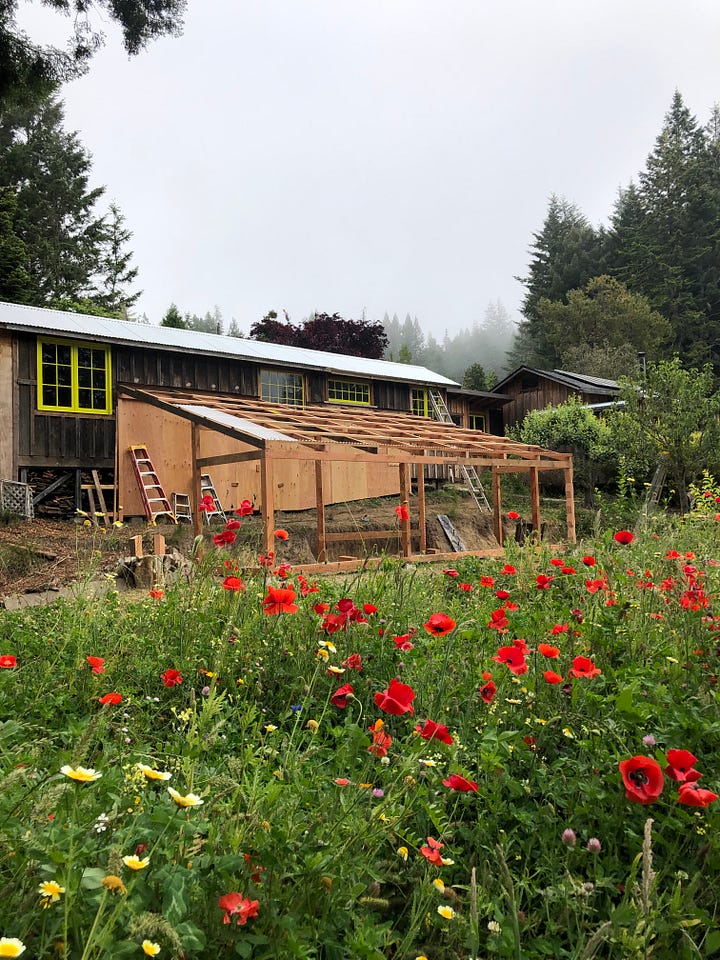
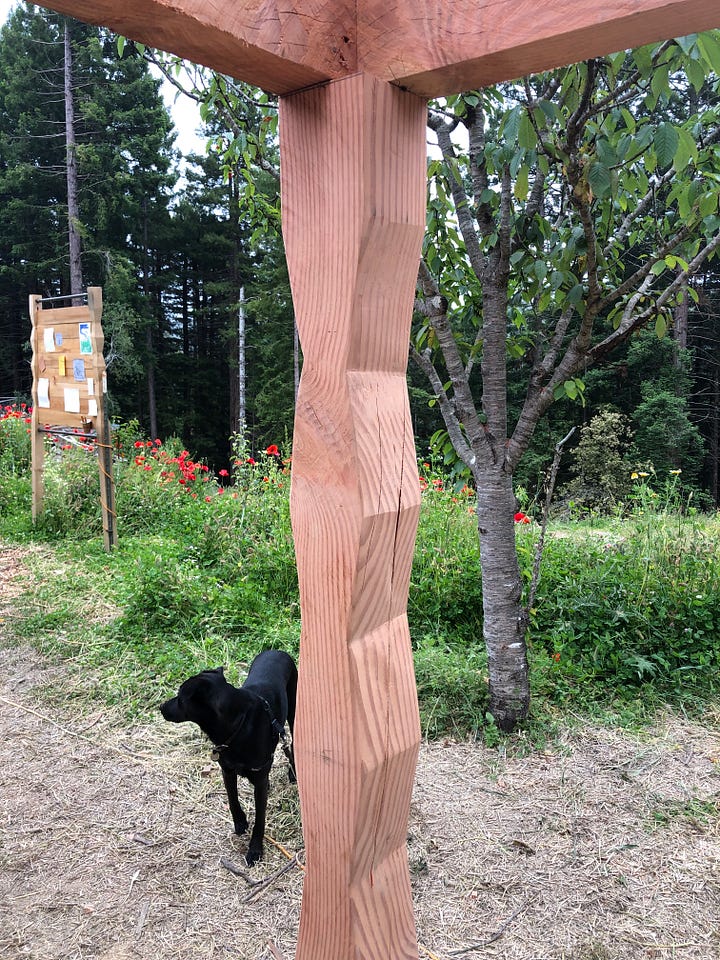
By the third year, we were ready to build a greenhouse. We used timbers left over from an earlier project, and practiced tradition timber framing techniques. The structure came together really nicely. Now, it’s filled with plants, life, and little details that remind me of the creativity and care we poured into it.
Looking back, these projects represent so much more than just carpentry. They embody collaboration, learning, and community in a way I hadn’t experienced before. And though I still live and work in Portland, a piece of my heart remains at Salmon Creek Farm, where I grew as both a builder and a person.
This spirit of communal building, learning, teaching, sharing, cooking, eating, etc will directly inspire our new seasonal art school launching in the spring, sign up for our email list to be the first to know when we announce and open applications later this month.


